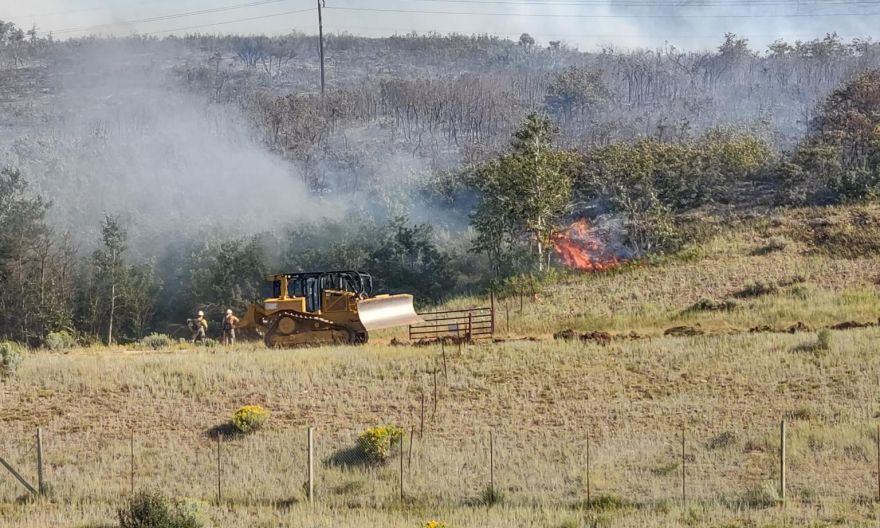Thousands evacuate as wildfires ravage Utah and northern California

LOS ANGELES (NYTIMES) – Intense wildfires continued to burn across parts of the western United States on Sunday (Aug 15), prompting thousands of evacuations in Utah and northern California as the fires collectively engulfed more than a half-million acres of land.
The Dixie Fire in California had spread to more than 550,000 acres (222,500ha) across four counties in the northern part of the state and was 31 per cent contained as at Sunday morning, according to Cal Fire.
In eastern Utah, the Parleys Canyon Fire, which ignited Saturday afternoon, quickly forced the evacuation of at least 6,000 homes, according to the authorities.
Governor Spencer Cox of Utah warned that Sunday would be “another difficult fire day”, as the blaze had charred at least 1,500 acres east of Salt Lake City and was zero per cent contained.
Mr Cox said that some of Utah’s firefighters were returning from wildfire duty in other states to fight the blaze in Parleys Canyon.
The Federal Emergency Management Agency said on Sunday that it had agreed to a request from officials in Utah to help cover the cost of fighting the fire.
The American Red Cross of Utah said that 25 people had stayed in a shelter that the organisation had set up at a high school in Park City on Saturday night.
The state fire authorities said the fire started when a car sent sparks flying along a highway after its catalytic converter, a device that controls exhaust emissions, malfunctioned.
The Utah Department of Public Safety said in a statement on Saturday that the authorities had discovered two fires burning a mile apart along a highway in Parleys Canyon, and that the blaze quickly spread up a nearby mountain.
The fire continued on an eastward path and was moving “at a rapid pace”, the department said.
The sheriff of Summit County, which includes Parleys Canyon, said on Twitter on Saturday night that some residents had refused to evacuate, and that their decision was putting firefighters and other emergency workers in danger.
Saturday was a dry, sweltering day in parts of Utah. In Salt Lake City, the temperature peaked at 100 deg F (38 deg C) and the humidity dropped as low as 13 per cent, according to the National Weather Service.
Some much-needed help may be on the way later this week for the firefighters battling the state’s three wildfires, of which Parleys Canyon is the largest. There was a possibility of rain and thunderstorms across much of the state between Tuesday and Thursday, according to the National Weather Service in Salt Lake City.
In northern California, the Dixie Fire had destroyed 1,120 structures as at Sunday and threatened another 14,838 buildings, authorities said. Three firefighters suffered unspecified injuries, according to Cal Fire, which said the cause of the fire was still under investigation.
The blaze is the largest on record in the US and the largest single-origin wildfire in California history. Last year, lightning strikes ignited multiple wildfires in three national forests in California in what became known as the August Complex, burning more than one million acres.
For more than a month, firefighters have been struggling to quell the flames of the Dixie Fire, which earlier this month destroyed the Gold Rush town of Greenville, California, where before-and-after satellite photos showed the devastation.
Thunderstorms were forecast on Sunday for the area where the Dixie Fire was burning, a development that emergency responders said could hamper firefighting efforts if there are lightning strikes.
A drought in the region, where temperatures could reach 100 deg F with less than 18 per cent humidity, left the area particularly vulnerable to wildfires, the authorities said.
Although wildfires occur throughout the West every year, scientists see the influence of climate change in the extreme heat waves that have contributed to the intensity of fires this summer. Prolonged periods of abnormally high temperatures are a signal of a shifting climate, they say.



